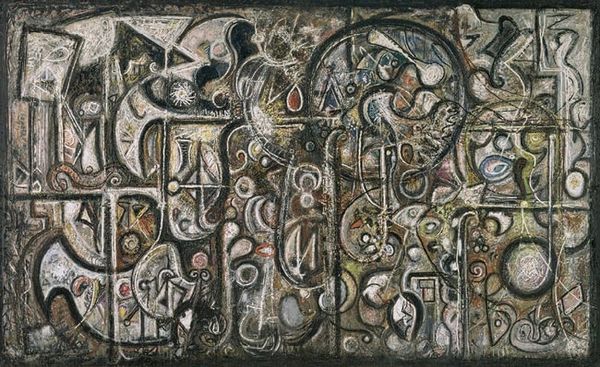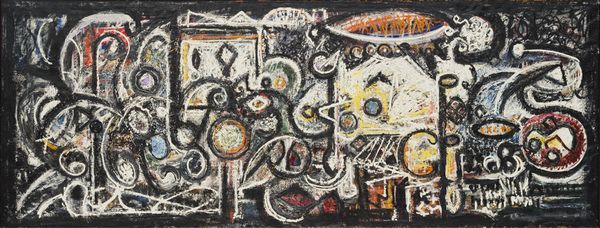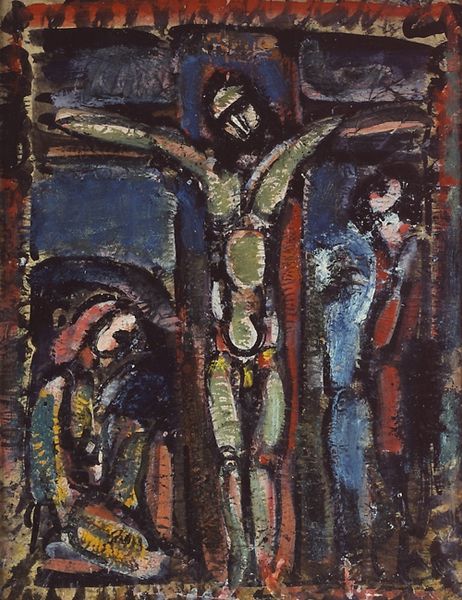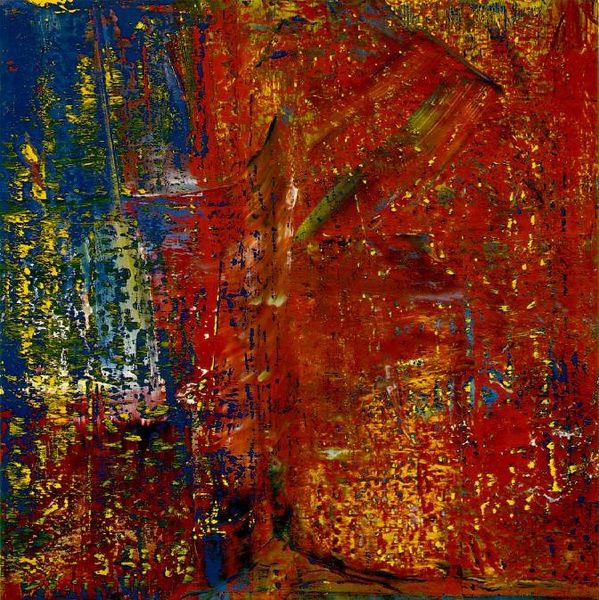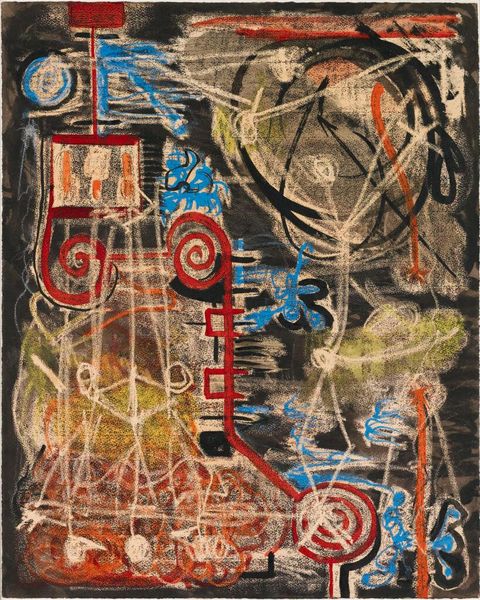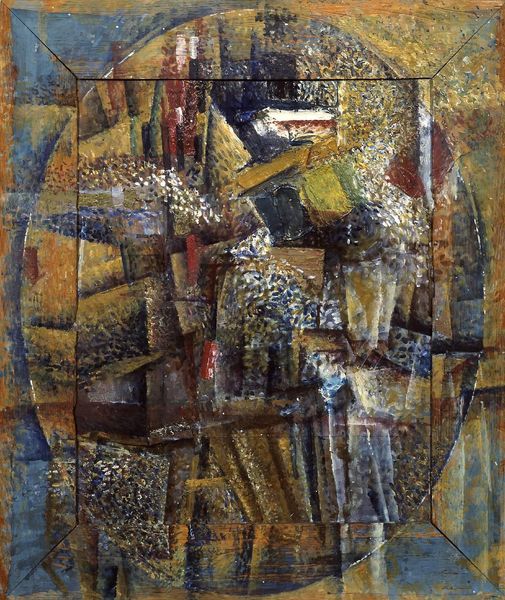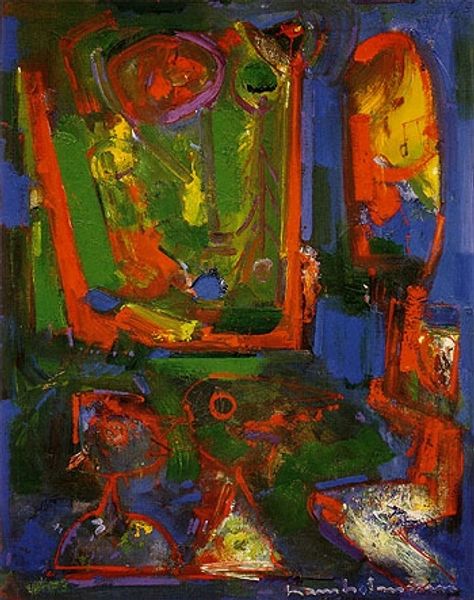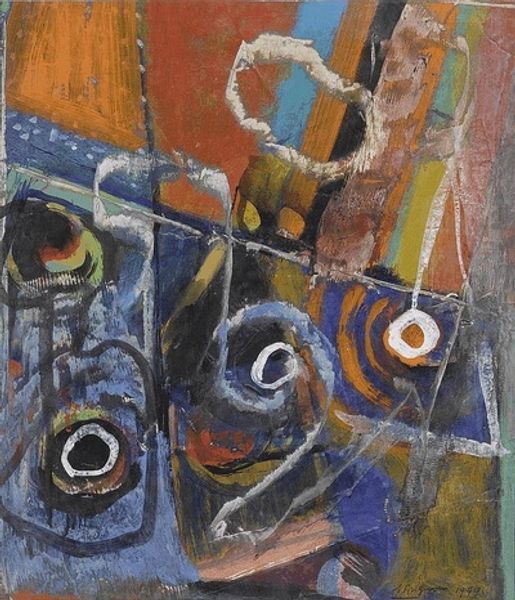
Copyright: Richard Pousette-Dart,Fair Use
Editor: We’re looking at “The Magnificent,” an oil painting by Richard Pousette-Dart, created in 1951. It feels very layered and almost frantic in its energy. There's so much to visually unpack, where do you even begin with a work like this? What strikes you most? Curator: Initially, I'm drawn to the structure—the linear scaffolding that contains the energetic brushstrokes. Notice how the artist employs these vertical lines to organize the chaos, almost like a musical staff for visual notes. Observe the interplay between line and form, the tension it creates. Do you perceive a hierarchy of colors or shapes within this framework? Editor: I see what you mean. The red is definitely dominant, creating these vertical bands. And those contained shapes do remind me of musical notation, or even glyphs in a language I can’t quite understand. So the lines create structure from that chaos? Curator: Precisely. Consider how the artist uses varying thicknesses and opacities in those black lines. They aren't merely boundaries but active participants in the composition, guiding the eye and adding depth. And let’s think of it as a symphony. Does the color palette suggest a certain emotional tonality, perhaps an attempt to depict complex psychological states? Editor: The bold colors give it an almost primal feeling, like raw emotion. So, instead of pure chaos, it’s organized chaos…like a vibrant system or score. Curator: Precisely. Pousette-Dart uses that control in conjunction with apparent randomness. We are perceiving not only emotion, but perhaps control over the expression of that emotion. Editor: It’s almost as if it were trying to express a sense of structured spontaneity. It’s far more intentional than I initially perceived. Curator: Agreed. What appeared to be a chaotic outburst, on deeper viewing and thought, is anything but. The balance between form and freedom yields much, upon reflection.
Comments
No comments
Be the first to comment and join the conversation on the ultimate creative platform.
